爬虫 - BeautifulSoup
Python 爬虫(Web Scraping)是指通过编写 Python 程序从互联网上自动提取信息的过程。
爬虫的基本流程通常包括发送 HTTP 请求获取网页内容、解析网页并提取数据,然后存储数据。
Python 的丰富生态使其成为开发爬虫的热门语言,特别是由于其强大的库支持。
一般来说,爬虫的流程可以分为以下几个步骤:
- 发送 HTTP 请求:爬虫通过 HTTP 请求从目标网站获取 HTML 页面,常用的库包括
requests。 - 解析 HTML 内容:获取 HTML 页面后,爬虫需要解析内容并提取数据,常用的库有
BeautifulSoup、lxml、Scrapy等。 - 提取数据:通过定位 HTML 元素(如标签、属性、类名等)来提取所需的数据。
- 存储数据:将提取的数据存储到数据库、CSV 文件、JSON 文件等格式中,以便后续使用或分析。
本章节主要介绍 BeautifulSoup,它是一个用于解析 HTML 和 XML 文档的 Python 库,能够从网页中提取数据,常用于网页抓取和数据挖掘。
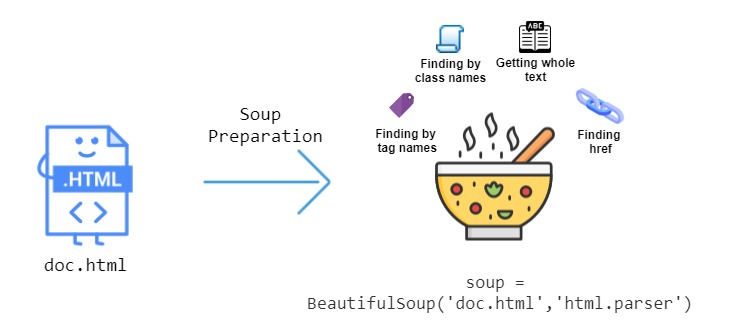
BeautifulSoup
BeautifulSoup 是一个用于从网页中提取数据的 Python 库,特别适用于解析 HTML 和 XML 文件。
BeautifulSoup 能够通过提供简单的 API 来提取和操作网页中的内容,非常适合用于网页抓取和数据提取的任务。
BeautifulSoup提供一些简单的、python式的函数用来处理导航、搜索、修改DOM树等功能。
BeautifulSoup自动将输入文档转换为Unicode编码,输出文档转换为utf-8编码。
BeautifulSoup已成为和lxml、html6lib一样出色的python解释器,为用户灵活地提供不同的解析策略或强劲的速度。
安装 BeautifulSoup
要使用 BeautifulSoup,需要安装 beautifulsoup4 和 lxml 或 html.parser(一个 HTML 解析器)。
我们可以使用 pip 来安装这些依赖:
pip install beautifulsoup4
pip install lxml # 推荐使用 lxml 作为解析器(速度更快)
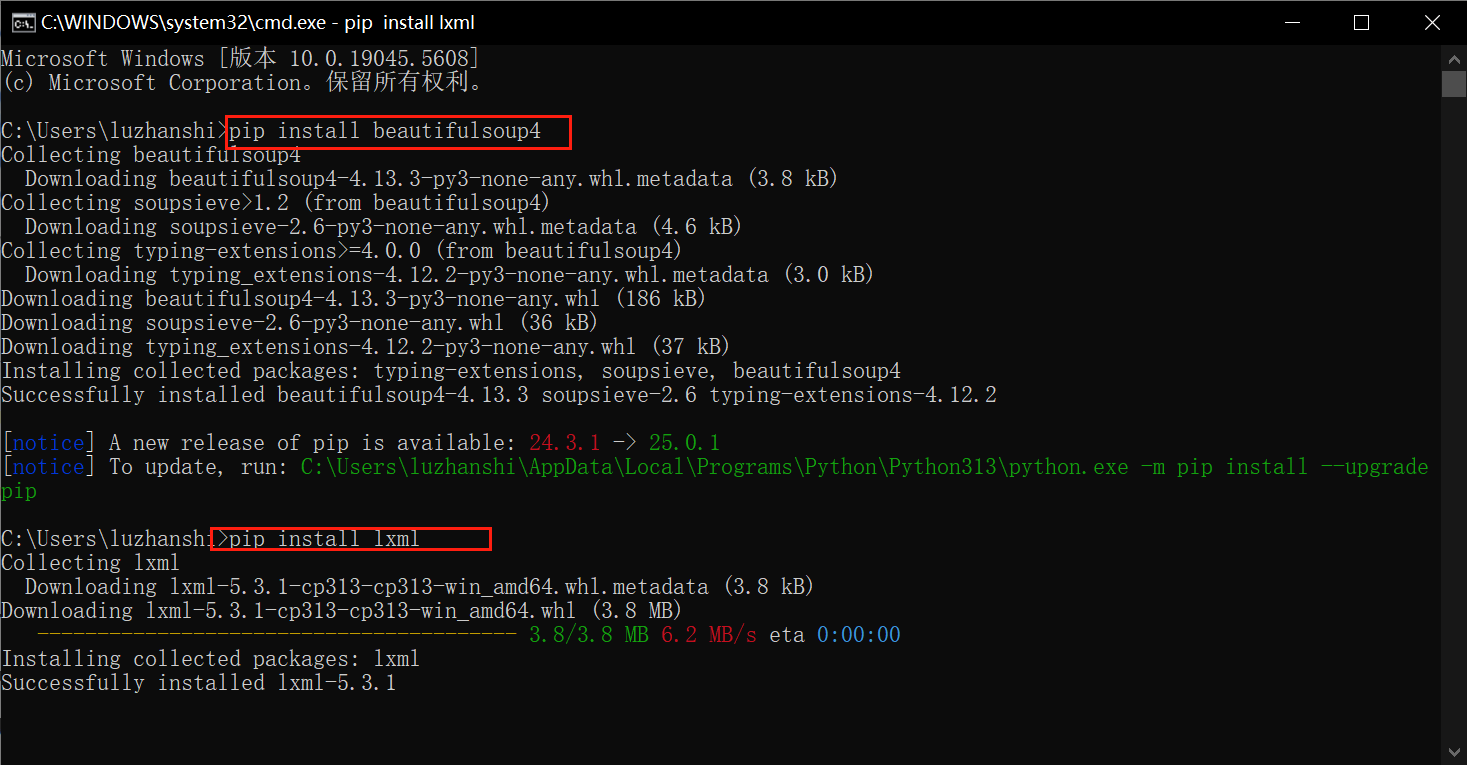
如果你没有 lxml,可以使用 Python 内置的 html.parser 作为解析器。
基本用法
BeautifulSoup 用于解析 HTML 或 XML 数据,并提供了一些方法来导航、搜索和修改解析树。
BeautifulSoup 常见的操作包括查找标签、获取标签属性、提取文本等。
要使用 BeautifulSoup,需要先导入 BeautifulSoup,并将 HTML 页面加载到 BeautifulSoup 对象中。
通常,你会先用爬虫库(如 requests)获取网页内容:
from bs4 import BeautifulSoup import requests # 使用 requests 获取网页内容 url = "https://cn.bing.com/" # 抓取bing搜索引擎的网页内容 response = requests.get(url) # 获取网页标题: # 防止中文乱码 response.encoding = "utf-8" # 确认请求是否成功 if response.status_code == 200: # 使用 BeautifulSoup 解析网页 soup1 = BeautifulSoup(response.text, "lxml") # 使用 lxml 解析器 soup2 = BeautifulSoup(response.text, "html.parser") # 解析网页内容 html.parser 解析器 # 查找<title>标签 # 方式1: title = soup1.find("title") if title: print(title.text) # 搜索 - Microsoft 必应 print(title.get_text()) # 搜索 - Microsoft 必应 else: print("未获取到<title>标签") # 方式2 if soup2.title: print(soup2.title.string) # 搜索 - Microsoft 必应 else: print("未获取到<title>标签") else: print("请求异常:", response.status_code)
查找标签
BeautifulSoup 提供了多种方法来查找网页中的标签,最常用的包括 find() 和 find_all()。
find()返回第一个匹配的标签find_all()返回所有匹配的标签
from bs4 import BeautifulSoup import requests url = "https://www.baidu.com/" response = requests.get(url) # 修正编码:更接近真实编码,但 检测需要时间(对大型响应可能影响性能)。 # 方法1 # response.encoding=chardet.detect(response.content)["encoding"] # 方法2 response.encoding = response.apparent_encoding soup = BeautifulSoup(response.text, "lxml") # find() 返回第一个匹配的标签 find = soup.find("a") # find_all() 返回所有匹配的标签 find_all = soup.find_all("a") # 打印a标签 print(find) # <a class="mnav" href="http://news.baidu.com" name="tj_trnews">新闻</a> # 打印a标签的href属性 print(find.get("href")) ##http://news.baidu.com print("*************") for item in find_all: print(item) # 打印完整a标签:<a class="mnav" href="http://news.baidu.com" name="tj_trnews">新闻</a> print(item.string) # 打印a标签内部的文本:新闻
结合正则表达式获取指定内容
import re import requests from bs4 import BeautifulSoup url="https://www.baidu.com/" html = requests.get(url) html.encoding=html.apparent_encoding soup = BeautifulSoup(html.content, "html.parser") find_all = soup.find_all(href=re.compile(r"^http://.*")) print(find_all)
一次获取多个标签
find_all = soup.find_all(["a", "p"],class_="mnav",attrs={"name":"tj_trnews"}) # find_all = soup.find_all(["a", "p"]) for item in find_all: print(item)
根据文本内容获取标签
find_all = soup.find_all("a",string=re.compile(r"百度"),limit=2) for s in find_all: print(s) ''' <a href="http://home.baidu.com">关于百度</a> <a href="http://www.baidu.com/duty/">使用百度前必读</a> '''
获取标签的文本
通过 get_text() 方法,你可以提取标签中的文本内容:
from bs4 import BeautifulSoup import requests url = "https://www.baidu.com/" response = requests.get(url) response.encoding = response.apparent_encoding soup = BeautifulSoup(response.text, "lxml") # find() 返回第一个匹配的标签 find = soup.find("a") # 提取标签文本内容 print(find.get_text())#新闻 print(find.getText())#新闻 # 获取所有文本 print(soup.get_text())# 百度一下,你就知道 新闻 hao123 地图 视频 贴吧 登录 更多产品 关于百度 About Baidu ©2017 Baidu 使用百度前必读 意见反馈 京ICP证030173号 print("*************")
查找子标签和父标签
你可以通过 parent 和 children 属性访问标签的父标签和子标签:
parent = find.parent print(parent)#<div id="u1"> <a class="mnav" href="http://news.baidu.com" name="tj_trnews">新闻</a> <a class="mnav" href="https://www.hao123.com" name="tj_trhao123">hao123</a> <a class="mnav" href="http://map.baidu.com" name="tj_trmap">地图</a> <a class="mnav" href="http://v.baidu.com" name="tj_trvideo">视频</a> <a class="mnav" href="http://tieba.baidu.com" name="tj_trtieba">贴吧</a> <noscript> <a class="lb" href="http://www.baidu.com/bdorz/login.gif?login&tpl=mn&u=http%3A%2F%2Fwww.baidu.com%2f%3fbdorz_come%3d1" name="tj_login">登录</a> </noscript> <script>document.write('<a href="http://www.baidu.com/bdorz/login.gif?login&tpl=mn&u='+ encodeURIComponent(window.location.href+ (window.location.search === "" ? "?" : "&")+ "bdorz_come=1")+ '" name="tj_login" class="lb">登录</a>');</script> <a class="bri" href="//www.baidu.com/more/" name="tj_briicon" style="display: block;">更多产品</a> </div> print(parent.get_text())#新闻 hao123 地图 视频 贴吧 登录 更多产品 print("-------------------") div = soup.find("div") print(div) children = div.children for child in children: print(child) ''' <div id="wrapper"> <div id="head"> <div class="head_wrapper"> <div class="s_form"> <div class="s_form_wrapper"> <div id="lg"> <img height="129" hidefocus="true" src="//www.baidu.com/img/bd_logo1.png" width="270"/> </div> <form action="//www.baidu.com/s" class="fm" id="form" name="f"> <input name="bdorz_come" type="hidden" value="1"/> <input name="ie" type="hidden" value="utf-8"/> <input name="f" type="hidden" value="8"/> <input name="rsv_bp" type="hidden" value="1"/> <input name="rsv_idx" type="hidden" value="1"/> <input name="tn" type="hidden" value="baidu"/><span class="bg s_ipt_wr"><input autocomplete="off" autofocus="autofocus" class="s_ipt" id="kw" maxlength="255" name="wd" value=""/></span><span class="bg s_btn_wr"><input autofocus="" class="bg s_btn" id="su" type="submit" value="百度一下"/></span> </form> </div> </div> <div id="u1"> <a class="mnav" href="http://news.baidu.com" name="tj_trnews">新闻</a> <a class="mnav" href="https://www.hao123.com" name="tj_trhao123">hao123</a> <a class="mnav" href="http://map.baidu.com" name="tj_trmap">地图</a> <a class="mnav" href="http://v.baidu.com" name="tj_trvideo">视频</a> <a class="mnav" href="http://tieba.baidu.com" name="tj_trtieba">贴吧</a> <noscript> <a class="lb" href="http://www.baidu.com/bdorz/login.gif?login&tpl=mn&u=http%3A%2F%2Fwww.baidu.com%2f%3fbdorz_come%3d1" name="tj_login">登录</a> </noscript> <script>document.write('<a href="http://www.baidu.com/bdorz/login.gif?login&tpl=mn&u='+ encodeURIComponent(window.location.href+ (window.location.search === "" ? "?" : "&")+ "bdorz_come=1")+ '" name="tj_login" class="lb">登录</a>'); </script> <a class="bri" href="//www.baidu.com/more/" name="tj_briicon" style="display: block;">更多产品</a> </div> </div> </div> <div id="ftCon"> <div id="ftConw"> <p id="lh"> <a href="http://home.baidu.com">关于百度</a> <a href="http://ir.baidu.com">About Baidu</a> </p> <p id="cp">©2017 Baidu <a href="http://www.baidu.com/duty/">使用百度前必读</a> <a class="cp-feedback" href="http://jianyi.baidu.com/">意见反馈</a> 京ICP证030173号 <img src="//www.baidu.com/img/gs.gif"/> </p> </div> </div> </div> <div id="head"> <div class="head_wrapper"> <div class="s_form"> <div class="s_form_wrapper"> <div id="lg"> <img height="129" hidefocus="true" src="//www.baidu.com/img/bd_logo1.png" width="270"/> </div> <form action="//www.baidu.com/s" class="fm" id="form" name="f"> <input name="bdorz_come" type="hidden" value="1"/> <input name="ie" type="hidden" value="utf-8"/> <input name="f" type="hidden" value="8"/> <input name="rsv_bp" type="hidden" value="1"/> <input name="rsv_idx" type="hidden" value="1"/> <input name="tn" type="hidden" value="baidu"/><span class="bg s_ipt_wr"><input autocomplete="off" autofocus="autofocus" class="s_ipt" id="kw" maxlength="255" name="wd" value=""/></span><span class="bg s_btn_wr"><input autofocus="" class="bg s_btn" id="su" type="submit" value="百度一下"/></span> </form> </div> </div> <div id="u1"> <a class="mnav" href="http://news.baidu.com" name="tj_trnews">新闻</a> <a class="mnav" href="https://www.hao123.com" name="tj_trhao123">hao123</a> <a class="mnav" href="http://map.baidu.com" name="tj_trmap">地图</a> <a class="mnav" href="http://v.baidu.com" name="tj_trvideo">视频</a> <a class="mnav" href="http://tieba.baidu.com" name="tj_trtieba">贴吧</a> <noscript> <a class="lb" href="http://www.baidu.com/bdorz/login.gif?login&tpl=mn&u=http%3A%2F%2Fwww.baidu.com%2f%3fbdorz_come%3d1" name="tj_login">登录</a> </noscript> <script>document.write('<a href="http://www.baidu.com/bdorz/login.gif?login&tpl=mn&u='+ encodeURIComponent(window.location.href+ (window.location.search === "" ? "?" : "&")+ "bdorz_come=1")+ '" name="tj_login" class="lb">登录</a>'); </script> <a class="bri" href="//www.baidu.com/more/" name="tj_briicon" style="display: block;">更多产品</a> </div> </div> </div> <div id="ftCon"> <div id="ftConw"> <p id="lh"> <a href="http://home.baidu.com">关于百度</a> <a href="http://ir.baidu.com">About Baidu</a> </p> <p id="cp">©2017 Baidu <a href="http://www.baidu.com/duty/">使用百度前必读</a> <a class="cp-feedback" href="http://jianyi.baidu.com/">意见反馈</a> 京ICP证030173号 <img src="//www.baidu.com/img/gs.gif"/> </p> </div> </div>
查找具有特定属性的标签
你可以通过传递属性来查找具有特定属性的标签。
例如,查找类名为 example-class 的所有 div 标签:
# 查找所有 class="example-class" 的 <div> 标签 divs_with_class = soup.find_all('div', class_='example-class') # 查找具有 id="unique-id" 的 <p> 标签 unique_paragraph = soup.find('p', id='unique-id')
获取搜索按钮,id 为 su :
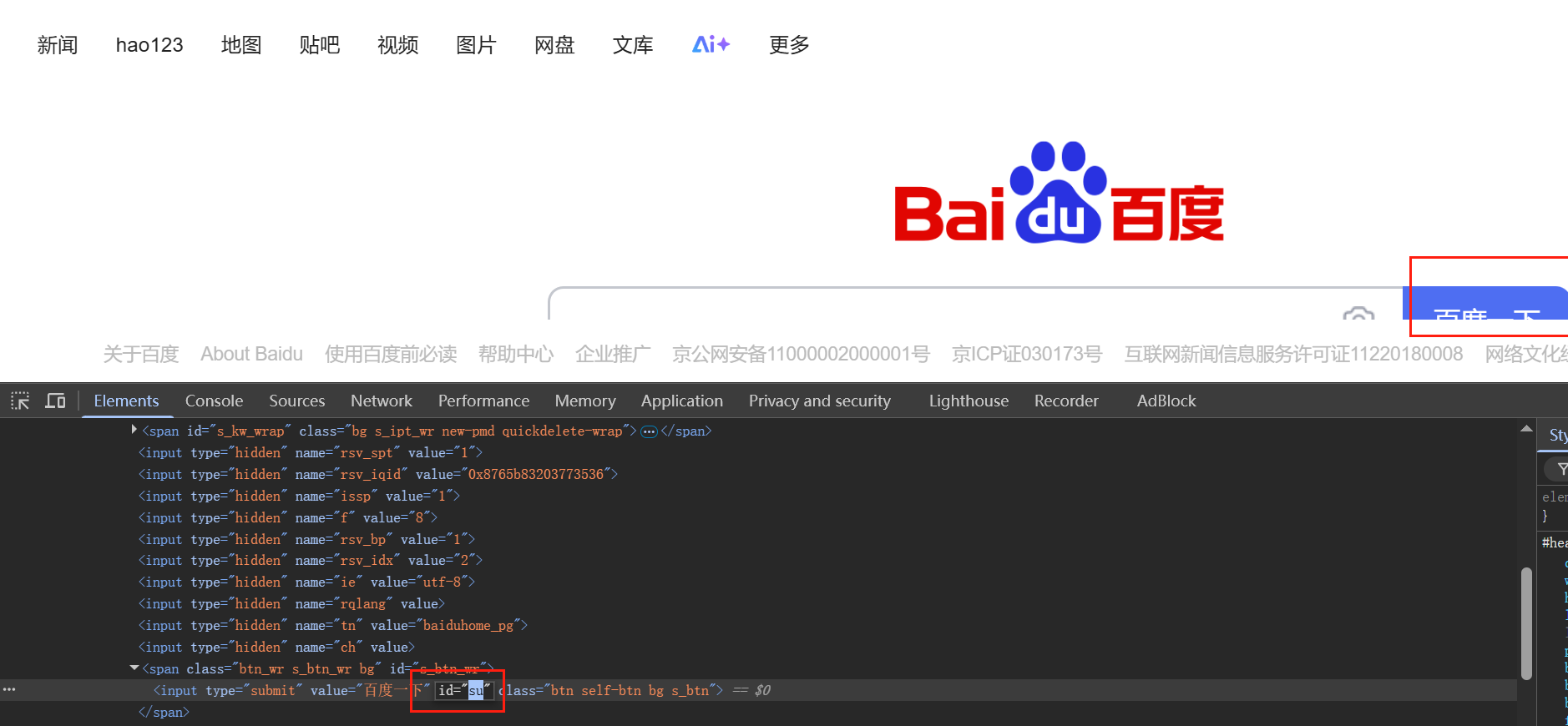
idInput = soup.find("input", id="su") print(idInput)#<input autofocus="" class="bg s_btn" id="su" type="submit" value="百度一下"/> # 获取输入框值 print(idInput["value"])#百度一下 soup_find_all = soup.find_all("a", class_="mnav") # 好像不支持多个类 # soup_find_all = soup.find_all("a", class_="mnav c-font-normal c-color-t") for item in soup_find_all: print(item) ''' <input autofocus="" class="bg s_btn" id="su" type="submit" value="百度一下"/> <a class="mnav" href="http://news.baidu.com" name="tj_trnews">新闻</a> <a class="mnav" href="https://www.hao123.com" name="tj_trhao123">hao123</a> <a class="mnav" href="http://map.baidu.com" name="tj_trmap">地图</a> <a class="mnav" href="http://v.baidu.com" name="tj_trvideo">视频</a> <a class="mnav" href="http://tieba.baidu.com" name="tj_trtieba">贴吧</a> '''
高级用法
CSS 选择器
BeautifulSoup 也支持通过 CSS 选择器来查找标签。
这就是另一种与findall方法有异曲同工之妙的查找方法
写CSS时,标签名不加任何修饰,类名前加.,id名前加#
在这里我们也可以利用类似的方法来筛选元素,用到的方法是soup.select(),返回类型是list
知识补充,CSS里面的类表示:
.center {text-align:center;} p.center {text-align:center;}
select() 方法允许使用类似 jQuery 的选择器语法来查找标签:
import requests from bs4 import BeautifulSoup url="https://www.baidu.com/" ''' 反爬虫代码 1. 请求被拦截,未获取到真实页面 百度会检测请求头,未设置 User-Agent 的爬虫请求可能被重定向到验证页面或返回不同的 HTML 结构。 修复方法:添加浏览器请求头,模拟浏览器访问 ''' headers = { "User-Agent": "Mozilla/5.0 (Windows NT 10.0; Win64; x64) AppleWebKit/537.36 (KHTML, like Gecko) Chrome/91.0.4472.124 Safari/537.36" } html = requests.get(url,headers=headers) html.encoding=html.apparent_encoding soup = BeautifulSoup(html.content, "html.parser") # 标签查找 tagselect = soup.select('a',limit=3) print("标签查找:",tagselect) print("*****************************************************************************************************") # 类查找 classselect = soup.select('.text-color') print("类查找:",classselect) print("*****************************************************************************************************") # id查找 idselect = soup.select('#bottom_space') print("id查找:",idselect) print("*****************************************************************************************************") # 标签+类组合查找 classselect = soup.select('a.text-color') print("标签+类组合查找:",classselect) print("*****************************************************************************************************") # 标签+id查找 idselect = soup.select('div#bottom_space') print(" 标签+id查找:",idselect) print("*****************************************************************************************************") # 标签+属性组合查找 attrselect = soup.select("a[href='http://news.baidu.com']") print("标签+属性组合查找:",attrselect)#[<a class="mnav" href="http://news.baidu.com" name="tj_trnews">新闻</a>] print("*****************************************************************************************************")
更多选择器参考下列表格:
| 选择器 | 示例 | 示例说明 | CSS |
|---|---|---|---|
| .class | .intro | 选择所有class="intro"的元素 | 1 |
| #id | #firstname | 选择所有id="firstname"的元素 | 1 |
| * | * | 选择所有元素 | 2 |
| element | p | 选择所有<p>元素 | 1 |
| element,element | div,p | 选择所有<div>元素和 <p> 元素 | 1 |
| element.class | p.hometown | 选择所有 class="hometown" 的 <p> 元素 | 1 |
| element element | div p | 选择<div>元素内的所有<p>元素 | 1 |
| element>element | div>p | 选择所有父级是 <div> 元素的 <p> 元素 | 2 |
| element+element | div+p | 选择所有紧跟在 <div> 元素之后的第一个 <p> 元素 | 2 |
| [attribute] | [target] | 选择所有带有target属性元素 | 2 |
| [attribute=value] | [target=-blank] | 选择所有使用target="-blank"的元素 | 2 |
| [attribute~=value] | [title~=flower] | 选择标题属性包含单词"flower"的所有元素 | 2 |
| [attribute|=language] | [lang|=en] | 选择 lang 属性等于 en,或者以 en- 为开头的所有元素 | 2 |
| :link | a:link | 选择所有未访问链接 | 1 |
| :visited | a:visited | 选择所有访问过的链接 | 1 |
| :active | a:active | 选择活动链接 | 1 |
| :hover | a:hover | 选择鼠标在链接上面时 | 1 |
| :focus | input:focus | 选择具有焦点的输入元素 | 2 |
| :first-letter | p:first-letter | 选择每一个<p>元素的第一个字母 | 1 |
| :first-line | p:first-line | 选择每一个<p>元素的第一行 | 1 |
| :first-child | p:first-child | 指定只有当<p>元素是其父级的第一个子级的样式。 | 2 |
| :before | p:before | 在每个<p>元素之前插入内容 | 2 |
| :after | p:after | 在每个<p>元素之后插入内容 | 2 |
| :lang(language) | p:lang(it) | 选择一个lang属性的起始值="it"的所有<p>元素 | 2 |
| element1~element2 | p~ul | 选择p元素之后的每一个ul元素 | 3 |
| [attribute^=value] | a[src^="https"] | 选择每一个src属性的值以"https"开头的元素 | 3 |
| [attribute$=value] | a[src$=".pdf"] | 选择每一个src属性的值以".pdf"结尾的元素 | 3 |
| [attribute*=value] | a[src*="runoob"] | 选择每一个src属性的值包含子字符串"runoob"的元素 | 3 |
| :first-of-type | p:first-of-type | 选择每个p元素是其父级的第一个p元素 | 3 |
| :last-of-type | p:last-of-type | 选择每个p元素是其父级的最后一个p元素 | 3 |
| :only-of-type | p:only-of-type | 选择每个p元素是其父级的唯一p元素 | 3 |
| :only-child | p:only-child | 选择每个p元素是其父级的唯一子元素 | 3 |
| :nth-child(n) | p:nth-child(2) | 选择每个p元素是其父级的第二个子元素 | 3 |
| :nth-last-child(n) | p:nth-last-child(2) | 选择每个p元素的是其父级的第二个子元素,从最后一个子项计数 | 3 |
| :nth-of-type(n) | p:nth-of-type(2) | 选择每个p元素是其父级的第二个p元素 | 3 |
| :nth-last-of-type(n) | p:nth-last-of-type(2) | 选择每个p元素的是其父级的第二个p元素,从最后一个子项计数 | 3 |
| :last-child | p:last-child | 选择每个p元素是其父级的最后一个子级。 | 3 |
| :root | :root | 选择文档的根元素 | 3 |
| :empty | p:empty | 选择每个没有任何子级的p元素(包括文本节点) | 3 |
| :target | #news:target | 选择当前活动的#news元素(包含该锚名称的点击的URL) | 3 |
| :enabled | input:enabled | 选择每一个已启用的输入元素 | 3 |
| :disabled | input:disabled | 选择每一个禁用的输入元素 | 3 |
| :checked | input:checked | 选择每个选中的输入元素 | 3 |
| :not(selector) | :not(p) | 选择每个并非p元素的元素 | 3 |
| ::selection | ::selection | 匹配元素中被用户选中或处于高亮状态的部分 | 3 |
| :out-of-range | :out-of-range | 匹配值在指定区间之外的input元素 | 3 |
| :in-range | :in-range | 匹配值在指定区间之内的input元素 | 3 |
| :read-write | :read-write | 用于匹配可读及可写的元素 | 3 |
| :read-only | :read-only | 用于匹配设置 "readonly"(只读) 属性的元素 | 3 |
| :optional | :optional | 用于匹配可选的输入元素 | 3 |
| :required | :required | 用于匹配设置了 "required" 属性的元素 | 3 |
| :valid | :valid | 用于匹配输入值为合法的元素 | 3 |
| :invalid | :invalid | 用于匹配输入值为非法的元素 | 3 |
| :has | :has | 允许根据其后代元素来选择一个元素。 | 3 |
| :is | :is | 接收任何数量的选择器作为参数,并且返回这些选择器匹配的元素的并集。 | 3 |
处理嵌套标签
BeautifulSoup 支持深度嵌套的 HTML 结构,你可以通过递归查找子标签来处理这些结构:
# 查找嵌套的 <div> 标签 nested_divs = soup.find_all('div', class_='nested') for div in nested_divs: print(div.get_text())
修改网页内容
BeautifulSoup 允许你修改 HTML 内容。
我们可以修改标签的属性、文本或删除标签:
# 修改第一个 <a> 标签的 href 属性 first_link['href'] = 'http://new-url.com' # 修改第一个 <p> 标签的文本内容 first_paragraph = soup.find('p') first_paragraph.string = 'Updated content' # 删除某个标签 first_paragraph.decompose()
转换为字符串
你可以将解析的 BeautifulSoup 对象转换回 HTML 字符串:
# 转换为字符串 html_str = str(soup)
print(soup) print(str(soup)) ''' <!DOCTYPE html> <!--STATUS OK--><html> <head><meta content="text/html;charset=utf-8" http-equiv="content-type"/><meta content="IE=Edge" http-equiv="X-UA-Compatible"/><meta content="always" name="referrer"/><link href="https://ss1.bdstatic.com/5eN1bjq8AAUYm2zgoY3K/r/www/cache/bdorz/baidu.min.css" rel="stylesheet" type="text/css"/><title>百度一下,你就知道</title></head> <body link="#0000cc"> <div id="wrapper"> <div id="head"> <div class="head_wrapper"> <div class="s_form"> <div class="s_form_wrapper"> <div id="lg"> <img height="129" hidefocus="true" src="//www.baidu.com/img/bd_logo1.png" width="270"/> </div> <form action="//www.baidu.com/s" class="fm" id="form" name="f"> <input name="bdorz_come" type="hidden" value="1"/> <input name="ie" type="hidden" value="utf-8"/> <input name="f" type="hidden" value="8"/> <input name="rsv_bp" type="hidden" value="1"/> <input name="rsv_idx" type="hidden" value="1"/> <input name="tn" type="hidden" value="baidu"/><span class="bg s_ipt_wr"><input autocomplete="off" autofocus="autofocus" class="s_ipt" id="kw" maxlength="255" name="wd" value=""/></span><span class="bg s_btn_wr"><input autofocus="" class="bg s_btn" id="su" type="submit" value="百度一下"/></span> </form> </div> </div> <div id="u1"> <a class="mnav" href="http://news.baidu.com" name="tj_trnews">新闻+++++++</a> <a class="mnav" href="https://www.hao123.com" name="tj_trhao123">hao123+++++++</a> <a class="mnav" href="http://map.baidu.com" name="tj_trmap">地图+++++++</a> <a class="mnav" href="http://v.baidu.com" name="tj_trvideo">视频+++++++</a> <a class="mnav" href="http://tieba.baidu.com" name="tj_trtieba">贴吧+++++++</a> <noscript> <a class="lb" href="http://www.baidu.com/bdorz/login.gif?login&tpl=mn&u=http%3A%2F%2Fwww.baidu.com%2f%3fbdorz_come%3d1" name="tj_login">登录</a> </noscript> <script>document.write('<a href="http://www.baidu.com/bdorz/login.gif?login&tpl=mn&u='+ encodeURIComponent(window.location.href+ (window.location.search === "" ? "?" : "&")+ "bdorz_come=1")+ '" name="tj_login" class="lb">登录</a>'); </script> <a class="bri" href="//www.baidu.com/more/" name="tj_briicon" style="display: block;">更多产品</a> </div> </div> </div> <div id="ftCon"> <div id="ftConw"> <p id="lh"> <a href="http://home.baidu.com">关于百度</a> <a href="http://ir.baidu.com">About Baidu</a> </p> <p id="cp">©2017 Baidu <a href="http://www.baidu.com/duty/">使用百度前必读</a> <a class="cp-feedback" href="http://jianyi.baidu.com/">意见反馈</a> 京ICP证030173号 <img src="//www.baidu.com/img/gs.gif"/> </p> </div> </div> </div> </body> </html> <!DOCTYPE html> <!--STATUS OK--><html> <head><meta content="text/html;charset=utf-8" http-equiv="content-type"/><meta content="IE=Edge" http-equiv="X-UA-Compatible"/><meta content="always" name="referrer"/><link href="https://ss1.bdstatic.com/5eN1bjq8AAUYm2zgoY3K/r/www/cache/bdorz/baidu.min.css" rel="stylesheet" type="text/css"/><title>百度一下,你就知道</title></head> <body link="#0000cc"> <div id="wrapper"> <div id="head"> <div class="head_wrapper"> <div class="s_form"> <div class="s_form_wrapper"> <div id="lg"> <img height="129" hidefocus="true" src="//www.baidu.com/img/bd_logo1.png" width="270"/> </div> <form action="//www.baidu.com/s" class="fm" id="form" name="f"> <input name="bdorz_come" type="hidden" value="1"/> <input name="ie" type="hidden" value="utf-8"/> <input name="f" type="hidden" value="8"/> <input name="rsv_bp" type="hidden" value="1"/> <input name="rsv_idx" type="hidden" value="1"/> <input name="tn" type="hidden" value="baidu"/><span class="bg s_ipt_wr"><input autocomplete="off" autofocus="autofocus" class="s_ipt" id="kw" maxlength="255" name="wd" value=""/></span><span class="bg s_btn_wr"><input autofocus="" class="bg s_btn" id="su" type="submit" value="百度一下"/></span> </form> </div> </div> <div id="u1"> <a class="mnav" href="http://news.baidu.com" name="tj_trnews">新闻+++++++</a> <a class="mnav" href="https://www.hao123.com" name="tj_trhao123">hao123+++++++</a> <a class="mnav" href="http://map.baidu.com" name="tj_trmap">地图+++++++</a> <a class="mnav" href="http://v.baidu.com" name="tj_trvideo">视频+++++++</a> <a class="mnav" href="http://tieba.baidu.com" name="tj_trtieba">贴吧+++++++</a> <noscript> <a class="lb" href="http://www.baidu.com/bdorz/login.gif?login&tpl=mn&u=http%3A%2F%2Fwww.baidu.com%2f%3fbdorz_come%3d1" name="tj_login">登录</a> </noscript> <script>document.write('<a href="http://www.baidu.com/bdorz/login.gif?login&tpl=mn&u='+ encodeURIComponent(window.location.href+ (window.location.search === "" ? "?" : "&")+ "bdorz_come=1")+ '" name="tj_login" class="lb">登录</a>'); </script> <a class="bri" href="//www.baidu.com/more/" name="tj_briicon" style="display: block;">更多产品</a> </div> </div> </div> <div id="ftCon"> <div id="ftConw"> <p id="lh"> <a href="http://home.baidu.com">关于百度</a> <a href="http://ir.baidu.com">About Baidu</a> </p> <p id="cp">©2017 Baidu <a href="http://www.baidu.com/duty/">使用百度前必读</a> <a class="cp-feedback" href="http://jianyi.baidu.com/">意见反馈</a> 京ICP证030173号 <img src="//www.baidu.com/img/gs.gif"/> </p> </div> </div> </div> </body> </html> '''
BeautifulSoup 属性与方法
以下是 BeautifulSoup 中常用的属性和方法:
| 方法/属性 | 描述 | 示例 |
|---|---|---|
BeautifulSoup() |
用于解析 HTML 或 XML 文档并返回一个 BeautifulSoup 对象。 | soup = BeautifulSoup(html_doc, 'html.parser') |
.prettify() |
格式化并美化文档内容,生成结构化的字符串。 | print(soup.prettify()) |
.find() |
查找第一个匹配的标签。 | tag = soup.find('a') |
.find_all() |
查找所有匹配的标签,返回一个列表。 | tags = soup.find_all('a') |
.find_all_next() |
查找当前标签后所有符合条件的标签。 | tags = soup.find('div').find_all_next('p') |
.find_all_previous() |
查找当前标签前所有符合条件的标签。 | tags = soup.find('div').find_all_previous('p') |
.find_parent() |
返回当前标签的父标签。 | parent = tag.find_parent() |
.find_all_parents() |
查找当前标签的所有父标签。 | parents = tag.find_all_parents() |
.find_next_sibling() |
查找当前标签的下一个兄弟标签。 | next_sibling = tag.find_next_sibling() |
.find_previous_sibling() |
查找当前标签的前一个兄弟标签。 | prev_sibling = tag.find_previous_sibling() |
.parent |
获取当前标签的父标签。 | parent = tag.parent |
.next_sibling |
获取当前标签的下一个兄弟标签。 | next_sibling = tag.next_sibling |
.previous_sibling |
获取当前标签的前一个兄弟标签。 | prev_sibling = tag.previous_sibling |
.get_text() |
提取标签内的文本内容,忽略所有HTML标签。 | text = tag.get_text() |
.attrs |
返回标签的所有属性,以字典形式表示。 | href = tag.attrs['href'] |
.string |
获取标签内的字符串内容。 | string_content = tag.string |
.name |
返回标签的名称。 | tag_name = tag.name |
.contents |
返回标签的所有子元素,以列表形式返回(包含空格和换行)。 | children = tag.contents |
.descendants |
返回标签的所有后代元素,生成器形式。 | for child in tag.descendants: print(child) |
.parent |
获取当前标签的父标签。 | parent = tag.parent |
.previous_element |
获取当前标签的前一个元素(不包括文本)。 | prev_elem = tag.previous_element |
.next_element |
获取当前标签的下一个元素(不包括文本)。 | next_elem = tag.next_element |
.decompose() |
从树中删除当前标签及其内容。 | tag.decompose() |
.unwrap() |
移除标签本身,只保留其子内容。 | tag.unwrap() |
.insert() |
向标签内插入新标签或文本。 | tag.insert(0, new_tag) |
.insert_before() |
在当前标签前插入新标签。 | tag.insert_before(new_tag) |
.insert_after() |
在当前标签后插入新标签。 | tag.insert_after(new_tag) |
.extract() |
删除标签并返回该标签。 | extracted_tag = tag.extract() |
.replace_with() |
替换当前标签及其内容。 | tag.replace_with(new_tag) |
.has_attr() |
检查标签是否有指定的属性。 | if tag.has_attr('href'): |
.get() |
获取指定属性的值。 | href = tag.get('href') |
.clear() |
清空标签的所有内容。 | tag.clear() |
.encode() |
编码标签内容为字节流。 | encoded = tag.encode() |
.is_empty_element |
检查标签是否是空元素(例如 <br>、<img> 等)。 |
if tag.is_empty_element: |
.is_ancestor_of() |
检查当前标签是否是指定标签的祖先元素。 | if tag.is_ancestor_of(another_tag): |
.is_descendant_of() |
检查当前标签是否是指定标签的后代元素。 | if tag.is_descendant_of(another_tag): |
.string 和 .get_text()
.string 和 .get_text() 都用于提取标签中的文本内容,但它们的用途和行为有显著区别。以下是详细对比:
1. .string 的用法和特点
-
定义:
.string是 Tag 对象的属性,用于获取 直接包含在标签内的文本。 -
返回值:
-
如果标签 仅包含单个
NavigableString子节点(即没有嵌套其他标签),则返回该字符串。 -
如果标签包含 多个子节点(如嵌套标签或其他内容),则返回
None。
-
-
适用场景:简单标签且无嵌套结构时快速获取文本。
-
示例:
from bs4 import BeautifulSoup html = '<div>Hello, World!</div>' soup = BeautifulSoup(html, 'html.parser') print(soup.div.string) # 输出:Hello, World! html_nested = '<div>Hello <b>World</b></div>' soup_nested = BeautifulSoup(html_nested, 'html.parser') print(soup_nested.div.string) # 输出:None(因为存在嵌套标签)
2. get_text() 的用法和特点 定义:
.get_text() 是 Tag 对象的方法,用于递归获取 标签及其所有子标签的文本内容。
参数: separator:指定分隔符(默认为空字符串)。
strip:是否去除文本两端的空白(默认为 False)。
返回值:合并后的字符串(包含所有子标签的文本)。
适用场景:提取复杂嵌套结构中的全部文本。
示例:
html = '<div>Hello <b>World</b>!</div>' soup = BeautifulSoup(html, 'html.parser') print(soup.div.get_text()) # 输出:Hello World! print(soup.div.get_text(' ', strip=True)) # 输出:Hello World!(带空格分隔并去空格)
4. 使用建议
-
优先使用
.get_text():
在大多数爬虫场景中,页面结构复杂,使用.get_text()更可靠。例如:
# 提取所有文本并用换行符分隔 text = soup.get_text('\n', strip=True)
谨慎使用 .string:
仅在明确知道标签结构简单时使用,例如:
# 提取标题标签的文本 title = soup.title.string if soup.title else ''
其他属性
| 方法/属性 | 描述 | 示例 |
|---|---|---|
.style |
获取标签的内联样式。 | style = tag['style'] |
.id |
获取标签的 id 属性。 |
id = tag['id'] |
.class_ |
获取标签的 class 属性。 |
class_name = tag['class'] |
.string |
获取标签内部的字符串内容,忽略其他标签。 | content = tag.string |
.parent |
获取标签的父元素。 | parent = tag.parent |
其他
| 方法/属性 | 描述 | 示例 |
|---|---|---|
find_all(string) |
使用字符串查找匹配的标签。 | tag = soup.find_all('div', class_='container') |
find_all(id) |
查找指定 id 的标签。 |
tag = soup.find_all(id='main') |
find_all(attrs) |
查找具有指定属性的标签。 | tag = soup.find_all(attrs={"href": "http://example.com"}) |
将网页内容写入文件
url="http://www.baidu.com/" html = requests.get(url) html.encoding=html.apparent_encoding soup = BeautifulSoup(html.text, "lxml") prettify = soup.prettify() with open("../Test/index-prettify.html","w+",encoding="utf-8") as f: f.write(prettify)#美化后写入,注意,美化后我在网页预览时布局发生了错乱,具体原因未知 with open("../Test/index.html","w+",encoding="utf-8") as f: f.write(str(soup))#转换成str之后写入 print("寫入完成")

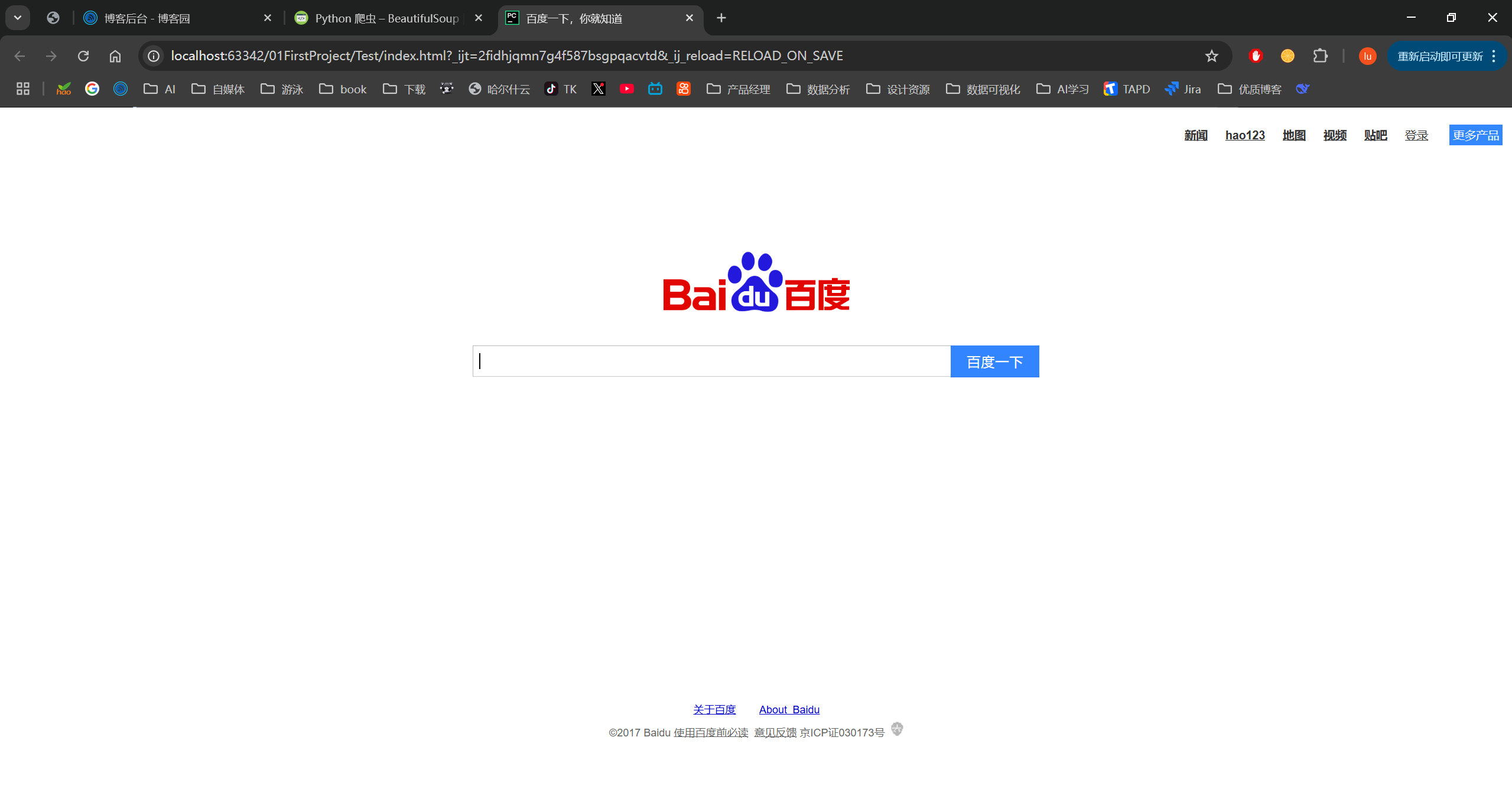
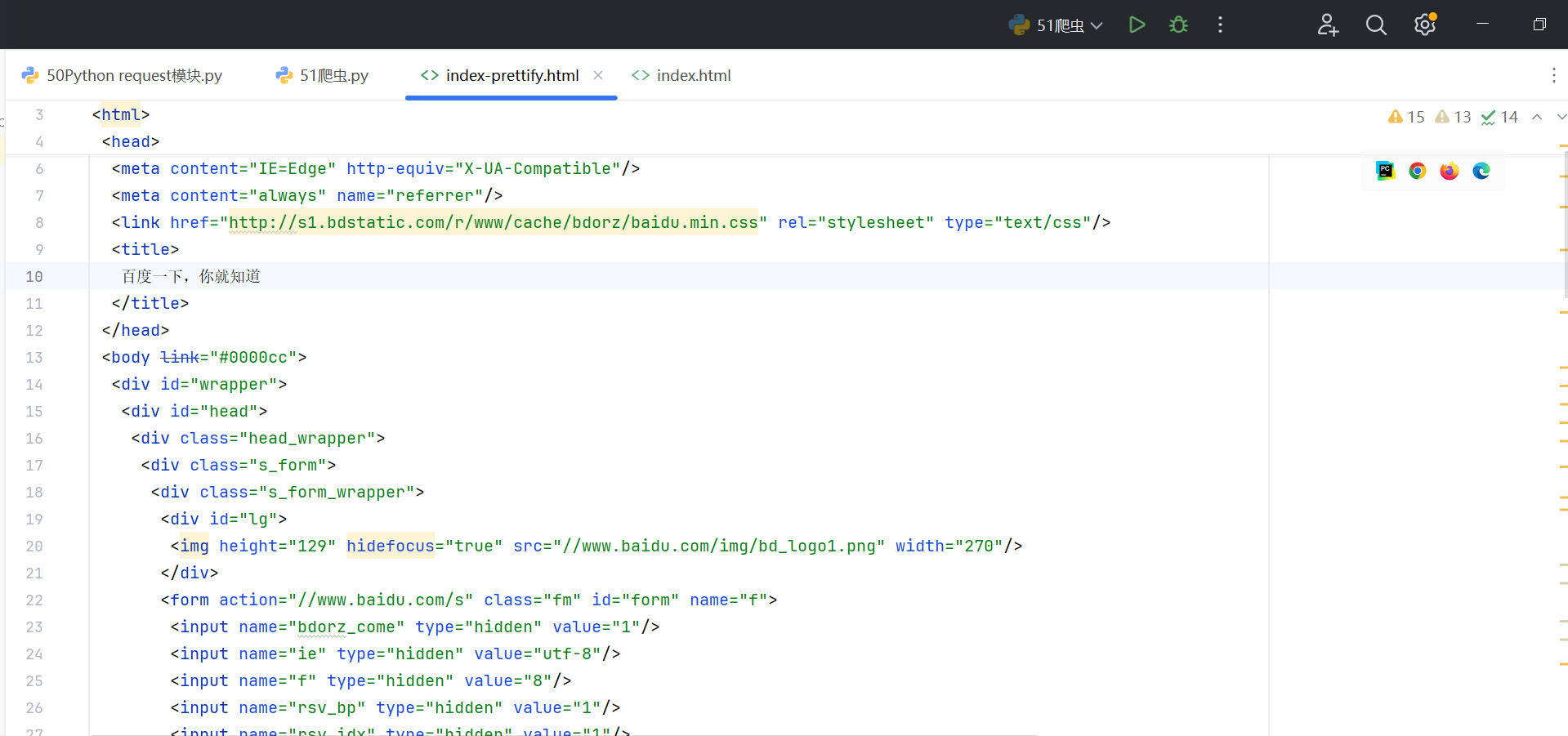
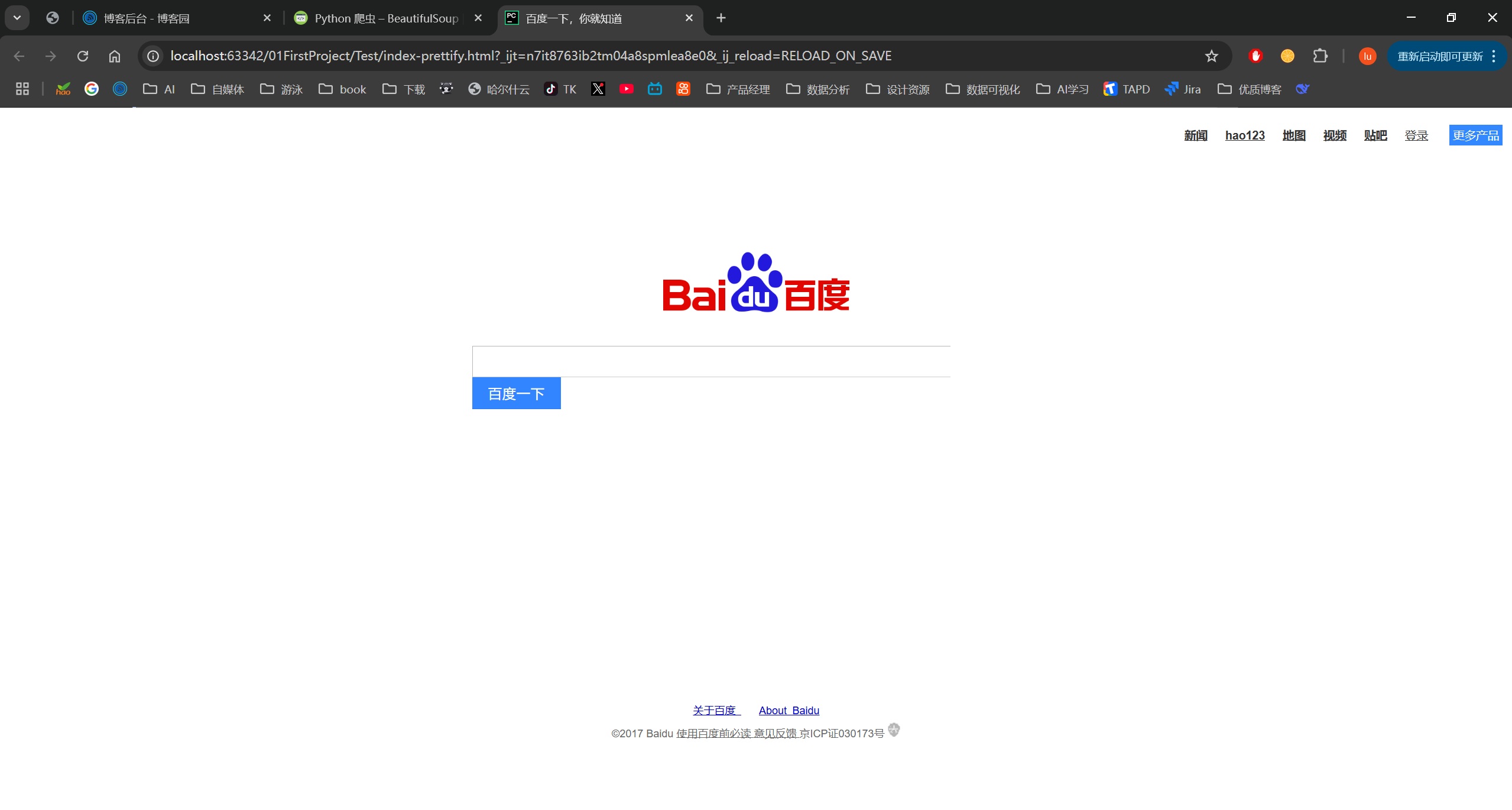
反爬虫
1. 请求被拦截,未获取到真实页面
例如,百度会检测请求头,未设置 User-Agent 的爬虫请求可能被重定向到验证页面或返回不同的 HTML 结构。
修复方法:添加浏览器请求头,添加 User-Agent 模拟浏览器。
headers = { "User-Agent": "Mozilla/5.0 (Windows NT 10.0; Win64; x64) AppleWebKit/537.36 (KHTML, like Gecko) Chrome/91.0.4472.124 Safari/537.36" } html = requests.get(url,headers=headers) html.encoding=html.apparent_encoding soup = BeautifulSoup(html.content, "html.parser") with open("../Test/有请求头返回的html.html","w+",encoding="utf-8") as f: f.write(str(soup))
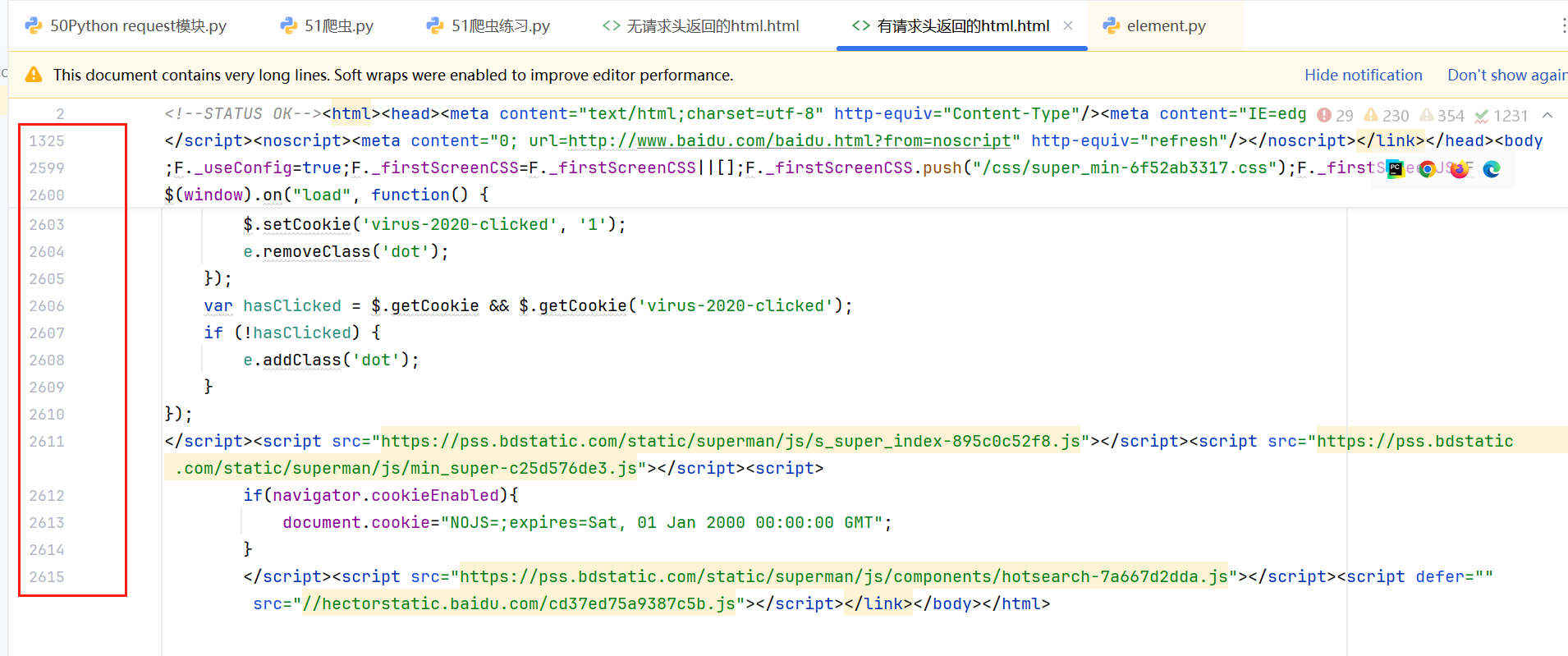
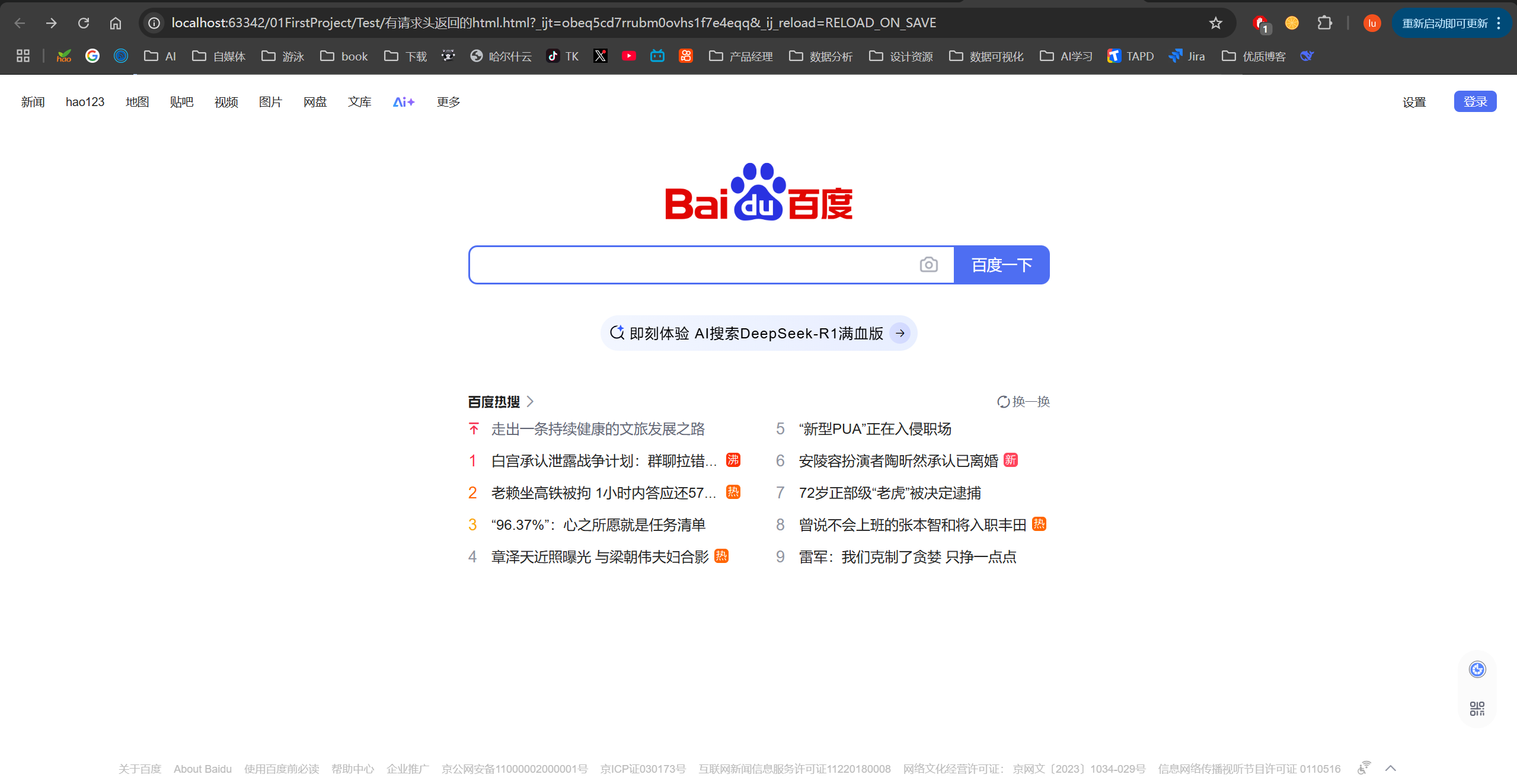
请求头获取方式:
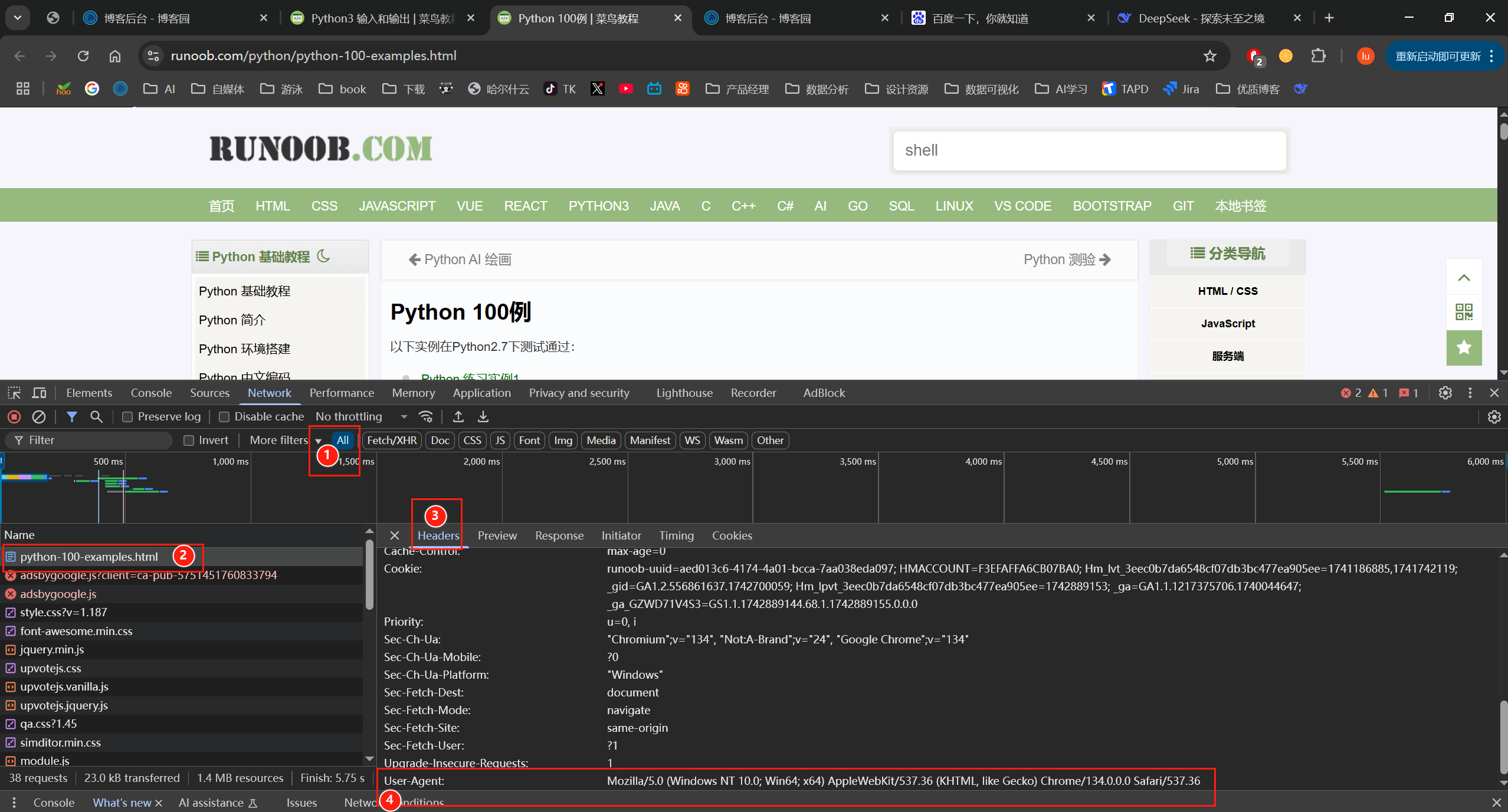
爬取本地文件
myHtml = BeautifulSoup(open("../Test/index-prettify.html","r",encoding="utf-8"), "lxml") print(myHtml.prettify())



 浙公网安备 33010602011771号
浙公网安备 33010602011771号